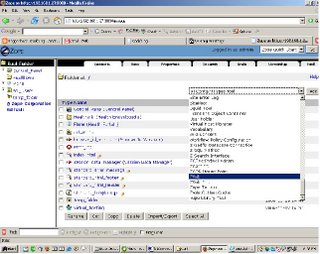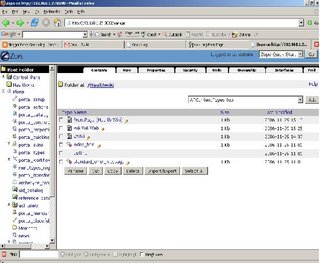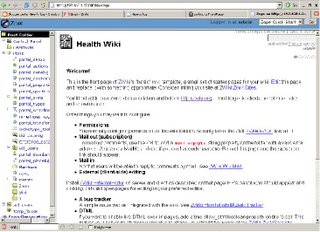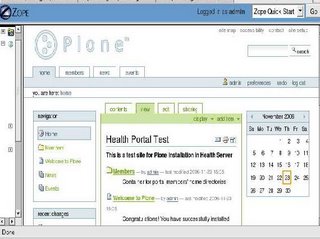
Dan Brown's holy dreck get the half-assed treatment it deserves
The Da Vinci Code / Jeremy C. Fox
For once in their charmed lives, it’s possible to pity Ron Howard and Tom Hanks. After all the media hype and Christian vitriol, how could their adaptation of Dan Brown’s 40-bazillion-selling thriller The Da Vinci Code be anything but a disappointment? Though the book has apparently entertained about a quarter of the world’s population, it’s nothing more than a slim, overcomplicated premise supported by characters that are about as three-dimensional as the guests at Charles Grodin’s “party” in The Lonely Guy and dressed up in overheated prose that makes Dean Koontz look like Gore Vidal.
I spent the past couple of years inwardly mocking Da Vinci Code readers and loathing Brown for his ignorance — anyone who knows a thing about art history knows that the man’s name was Leonardo, fer Chrissakes; he had no surname; “da Vinci” just tells you that he was from a little town in Tuscany — that is, until I drew the short straw and agreed to review the movie version, and my sense of responsibility required that I at least find out what all the hubbub was about. So I finally read the damn thing — as surreptitiously as possible — thinking that it couldn’t be that bad. Well, it is and it isn’t. From the outset, it’s clear that Brown is a prose stylist like I’m an ice dancer. Here’s the very first paragraph of the prologue:
"Renowned curator Jacques Saunière staggered through the vaulted archway of the museum’s Grand Gallery. He lunged for the nearest painting he could see, a Caravaggio. Grabbing the gilded frame, the seventy-six-year-old man heaved the masterpiece toward himself until it tore from the wall and Saunière collapsed backward in a heap beneath the canvas."
The thing is, while you’re reading the book, it seems very cinematic. Brown builds suspense by constantly cutting back and forth between a variety of situations, building to a series of mini-climaxes that keep you wondering just what bizarre twist he’ll come up with next; it’s a crude technique, but it’s effective at drawing you in. Yet the book is far too talky to be easily adapted for film; it’s all plot and exposition. If you were to take just the speeches that explain its mythology and read them aloud straight through, it would more than fill the movie’s two-and-a-half-hour running time.
The only way to make the movie work would be to somehow stay true enough to the source material to please its millions of fans while rejiggering it sufficiently that the characters had some depth, the dialogue resembled human speech, and the exhausting, headlong rush through two millennia of pseudohistory actually seemed to make sense; if there’s a way to go about that, I’ll be damned if I know what it is. Certainly, I wouldn’t begin by hiring Akiva Goldsman to write the screenplay. Here, in full, are Goldsman’s screenwriting credits to date: The Client; Silent Fall; Batman Forever; A Time to Kill; Batman & Robin; Lost in Space; Practical Magic; A Beautiful Mind; I, Robot; Cinderella Man; The Da Vinci Code. Anyone sensing a trend here? Like maybe a tendency to take existing material that’s already shallow, bland, and conventional and find a way to somehow make it shallower, blander, and so predictable you can guess the ending before the opening titles are over? (I’m willing to exempt parts of The Client, A Beautiful Mind, and Cinderella Man from my excoriation, but only because Susan Sarandon and Russell Crowe can pull off almost anything.) It’s worth noting that there is but one title on the list (Silent Fall) that isn’t an adaptation, and that, on five of the 11, Goldsman had a credited co-writer and — WGA-arbitrated credits being what they are — God knows how many uncredited ones. With a track record like that, an uncharitable person might be tempted to guess that the other writers contributed any parts of those scripts that worked; a more generous soul might just say that Goldsman is an enormous hack. At any rate, it’s safe to assume that it’s been a long time since he’s had a normal, non-Hollywood conversation; his tin ear for dialogue is metallurgically surpassed only by the lead pipe with which he drives home a point, any point.
Then there’s The Ron Howard Problem. Howard has never been a particularly distinctive director — name me a signature Howard touch, I dare you, and excessive schmaltz doesn’t count. Like Robert Zemeckis, he’s strictly Spielberg-lite: all of the boys-with-toys flash and the reactionary fantasies (Why can’t it be the ‘50s again, Mommy?) with none of the master’s flair. Howard has some talent, but he relies too much on cheap audience manipulation; indeed he’s at his best when, like a sleight-of-hand artist, he keeps us too distracted by what’s going on up front for us to notice how willfully he’s gouging at our emotions. Which is not to say that he can’t occasionally deliver a worthwhile film, particularly when he has the right leading man; Crowe was able to offset Cinderella Man’s Horatio Alger corn with enough genuine feeling that it slipped right through my cynicism bubble, and Apollo 13, despite its grueling length, managed to keep me involved in the astronauts’ plight, largely due to Hanks’ engaging Everyman quality. What’s disappointing is that, while Howard was able to maintain suspense in both those films despite our foreknowledge of how everything would come out, in The Da Vinci Code — whose central themes, if not all aspects of its resolution, are almost universally known by now — everything feels slack and uninvolving almost from the get-go. The characters are too blandly inhuman for us to really care about their fates; even the considerable charms of Hanks and Audrey Tautou aren’t enough to compensate for their characters’ limp conceptions. (Though Ian McKellen is just grand, delivering each hambone line with relish — what is it about classically trained British actors that they always have such infectious fun with over-the-top characters?) The endless convolutions of the plot, which were often genuinely thrilling on the page despite Brown’s inept writing, just seem like one damn thing after another, with no real purpose except that Scene H makes no sense without Scene G, which must follow Scenes E and F. Ironically, the film serves as a useful critique of the book: It inadvertently points out weaknesses in the text that I overlooked while reading it because I was actually being entertained.
As for Hanks, well, playing the tiresome pedant Robert Langdon represents perhaps the final step in the Costnerization of his career. You know the story: Likable young actor with a puckish quality charms the public, wins some respect with a few impressive performances in offbeat roles, takes advantage of his newfound clout to play auteur for a little while, then coasts into middle age with a series of truly dull parts in middle-of-the road movies, eroding whatever affection we once had for them. In the book, Langdon is famously described as “Harrison Ford in Harris tweed,” and in fact it’s a perfect Ford role: underwritten and purely functional, more an aspect of the plot than an individual person. It’s a waste of that particular Hanks spark that won us over 20 years ago and a completely unnecessary miscasting — why throw away money on the one superstar-Tom the public actually still likes when the film’s real star is ultimately Brown’s damn novel? Howard could easily have hired a relative unknown — perhaps someone a few years younger who would have matched up better with the gorgeous 29-year-old Tautou — and used the millions he saved to hire a better writer than Goldsman. It’s sad to see Hanks, who usually tackles any role with such earnest enthusiasm, phoning it in, though I suppose it’s to his credit that he can’t quite seem to take Langdon seriously. But his inability to do anything with the role further hobbles the movie; a younger, hungrier actor might have been desperate enough to find a way to energize the flat character; as it is, he’s nothing more than a walking encyclopedia of arcana that occasionally — and all too briefly — exhibits a Hanksian sense of irony.
The film follows the novel pretty closely, even including some of the most godawful passages of dialogue, but, fortunately for the audience, time constraints have led Goldsman to chip away at many of Brown’s longueurs. The protagonists no longer take forever to figure out the simplest clues but, on the other hand, a lot less emphasis is placed on cracking the codes, downplaying the most interesting part of the book, and they sometimes make more exaggerated claims for the secrets that they do suss out. “So dark the con of man” is a silly enough phrase when Brown introduces it as an expedient anagram; when the movie’s Langdon explains that it’s a sort of in-house catch-phrase for the Priory of Sion — a French secret society that, naturally, conducts all formal correspondence and sloganeering in stilted English — it makes my skin crawl. By trying to give meaning and context to Brown’s hokum, Goldsman just makes it all seem that much more ridiculous.
For all the outraged Christians, the good news is that — if they don’t simply find the movie far too bland to get worked up over — Goldsman and Howard have made some changes to the story that allow for a little more doubt about its biblical-historical assertions. They aren’t interested in making the movie a referendum on Christianity; as much as they can, they give it a standard thriller treatment, taking on the religious issues only when Brown’s plot forces their hand, and their attitude toward the book’s blasphemies is straight out of Inherit the Wind, trying to work out how Christianity and apostasy can meet up for a nice cup of tea. The film exonerates the Vatican of any part in the conspiracy plot, showing the conspirators’ fears that they’d be excommunicated if their dirty deeds were ever found out. It also makes it clear early on that the heroes are skeptical about Brown’s premises and that the true believers are, well, less than heroic. When Langdon and Teabing lay out the story of the Holy Grail conspiracy for Sophie, Langdon challenges Teabing’s claims about the Priory of Sion and the Council of Nicaea, noting (accurately) that the P of S myth was discredited decades ago and that the C of N’s affirmation of Christ’s divinity was only an acquiescence to what was already widely believed.
What may be more interesting — and troubling — than the changes to the story’s religious aspects is what Goldsman and Howard do with Tautou’s character. They reduce Sophie to nothing more than the audience’s proxy — not only ignorant of the details of the Grail legend but essentially a spectator through much of the film. Far from being the brilliant cryptographer of the novel, she’s just along for the ride, there only to look pretty and occasionally beat someone over the head. Goldman takes away her intellectual gifts but then tries to beef the part back up by making her short-tempered and violent — more beat cop than codebreaker — while he makes Langdon more superhuman, giving him a near-eidetic memory that allows him to swiftly solve riddles without needing to rely on some silly girl. It’s an unfortunate irony that, in a movie about a 2,000-year conspiracy to repress the power of the “sacred feminine,” the female lead is there merely to be acted upon, never to act. But then, when you think about it, Brown’s supposedly feminist idea of the Magdalene’s specialness is pretty sexist itself, deriving solely from the notion that her womb was the repository for the holy jizz.












